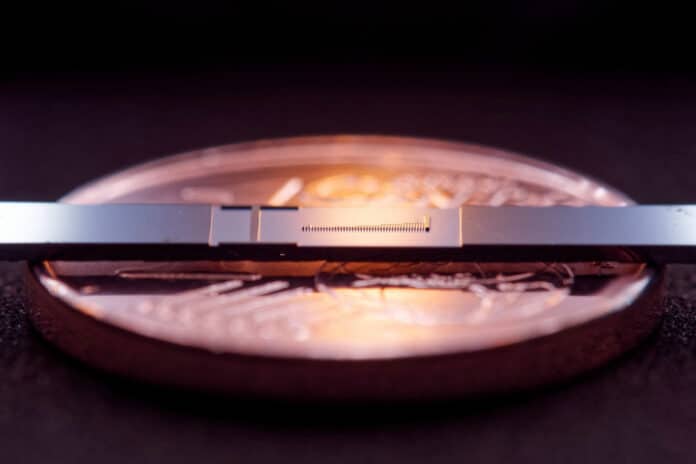Particle accelerators are essential tools in various areas of industry, science, and medicine. Usually, they come in size at a few square meters for medical applications and reach the size of large research centers.
A tiny alternative with potential orders-of-magnitude cost and size reductions is the acceleration of electrons with laser light inside a photonic nanostructure. Despite great efforts in research on dielectric laser acceleration, including complex electron phase space control with optical forces, noteworthy energy gains have yet to be shown. In other words, it has not been demonstrated that electrons have increased speed significantly.
FAU laser physicists have successfully demonstrated the first nanophotonic electron accelerator alongside Stanford University colleagues. This scalable nanophotonic electron accelerator coherently combines particle acceleration and transverse beam confinement. It then accelerates and guides electrons over a considerable distance of 500 μm in a 225-nm-wide channel. This makes the accelerator as small as a computer chip.
Dr. Tomáš Chlouba, one of the four lead authors of the recently published paper, explained, “Particles are accelerated by ultrashort laser pulses illuminating the nanostructures. The dream application would be to place a particle accelerator on an endoscope to administer radiotherapy directly at the affected area within the body.”
“This dream may still be far beyond the grasp. But, we have now taken a decisive step in the right direction by demonstrating the nanophotonic electron accelerator.”
Almost two years ago, the team successfully used the alternating phase focusing (APF) method from the early days of acceleration theory to control the flow of electrons in a vacuum channel over long distances. This was a crucial initial step in creating a particle accelerator. Now, only acceleration was required to gain significant amounts of energy.
Stefanie Kraus explained, “Using this technique, we have now succeeded not only in guiding electrons but also in accelerating them in these nano-fabricated structures over a length of half a millimeter.”
Leon Brückner said, “While this might not sound like much of an achievement to many, it is a huge success for the field of accelerator physics. We gained energy of 12 kilo electron volts. That is a 43 percent gain in energy.”
The FAU scientists used a combination of the APF approach and specifically created pillar-shaped geometrical structures to accelerate the particles over such significant distances (when viewed from the nanoscale).
But it’s only the beginning with this example. The goal is to boost electron current and energy gains to the point where the particle accelerator on a chip is adequate for medical applications. The increase in energy would need to be multiplied by about 100 for this to be the case.
Tomáš Chlouba explains the FAU laser physicists’ next steps: “In order to achieve higher electron currents at higher energies at the output of the structure, we will have to expand the structures or place several channels next to each other.”
Journal Reference:
- Chlouba, T., Shiloh, R., Kraus, S. et al. Coherent nanophotonic electron accelerator. Nature 622, 476–480 (2023). DOI: 10.1038/s41586-023-06602-7
